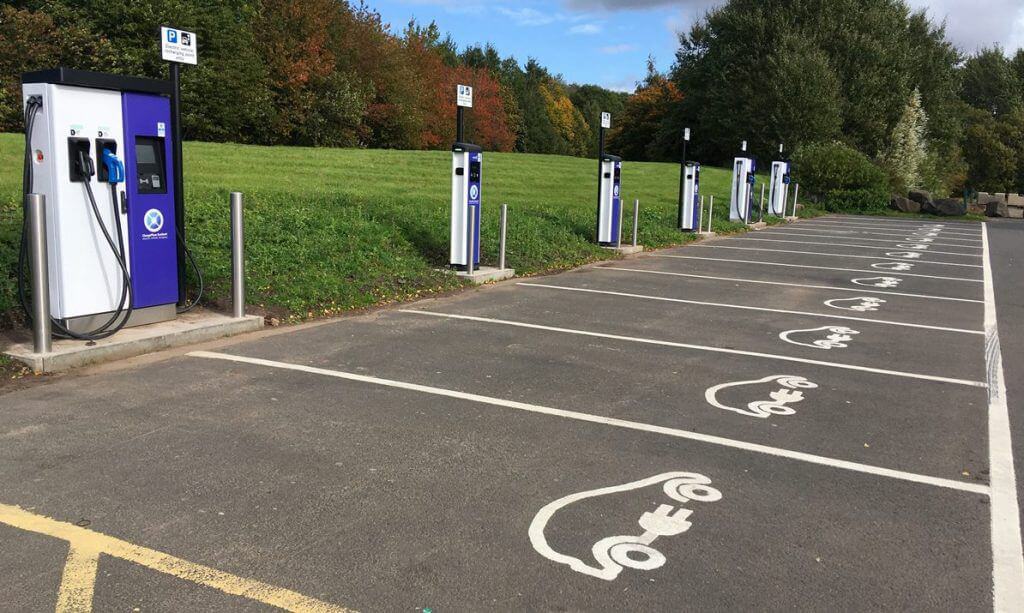One of the challenges for the wider adoption of electric vehicles is the availability of charging stations. PwC, with other analysts sharing similar sentiment, declare that for the UK to be a “world leader for new vehicles technology,” it needs to deliver a “road map,” for the charging infrastructure required to support EV adoption.
There are now bills for the provision of charging points and a government budget to fund at least some of a charging network. Power grids, especially residential ones, will need to be improved and smart technologies used, to make existing and new networks and EV infrastructure as efficient as possible.
Load balancing for electric vehicles is a critical function of the new infrastructure. It enables charging stations to divide available power supply between charging vehicles and ensures charge even if the charging station has limited available power supply.
Smart charging is required for load balancing. Smart charging sets and controls charging management across charging stations for efficiency without overload or an increase to power supply costs. It ensures an electric vehicle household or business fleet is ready for each day’s challenges in the same way as if conventional petrol- and diesel-powered vehicles were used.
Systems that deploy load balancing can be used to manage charging across multiple vehicles in a workplace, scheduling charging for example, overnight, when it is more cost-effective and can even be staggered or alternated without resulting in business downtime. Here we examine why load balancing is important in more detail.
1. Less need to upgrade power infrastructure
Domestic electric vehicle (EV) charging is normally designed to draw power at 7kW. Where AC EV rapid chargers are available, charging could be rated between 22kW and 43kW and DC en-route rapid charging starts at 50KW and above. This means that most charging requirements per vehicle are modest, less than an electric shower.
Domestic mains cables are usually rated at single-phase 100A (23KW), so peak domestic usage while charging multiple electric vehicles at a single residence, or similarly supplied business or charging point could exceed capacity. Residential substations provide between 315KW and 1000KW for about 100 houses, which is enough to support 45 electric cars and nothing else.

Load balancing systems enable a charging system to optimise charging by assessing available capacity, and adjusting charging rates and/or scheduling charging times across vehicles that need to be charged. This would reduce the cost of upgrading infrastructure for many homes, businesses, and all scales of power distribution.
2. Enables multiple electric vehicle charging at home
EV recharging needs are governed by the distance EVs cover on average, rather than the size of an EV’s battery. A UK car typically travels 20 miles per day, which amounts to 47 minutes of charging per day at 7KW.
Domestic and Residential load balancing technology would allow up to 10 cars to be charged per house or over 400 cars per street with a 315KW substation over an 8 hour night.
This means that the grid itself, at least at a residential level shouldn’t need an upgrade if smart load balancing technology is effectively employed.
3 Facilitates workplace electric vehicle charging
Many workplaces are embracing electric vehicle use by installing charging points for their workers. Others are using electric vehicles for their own business activities, not just supporting employee’s use for travel to and from work. Using load balancing technology at charge points means that multiple workers or company vehicles can be charged over a working day, some simultaneously, depending on the priority of use.
In addition, workplace charging reduces domestic charging demands (because up to half a worker’s charging needs are met during the day); it means lower travel costs for employees, which improves business efficiency as well as reducing travel expenses. In other words, load balancing can pay for itself over a relatively short period.
Furthermore, business charging provision can encourage multiple modes of travel, such as electric bicycles and thus help to improve healthier lifestyles within companies.
Finally, workplace smart load balancing can exploit what’s known as the “Duck Curve” by charging up vehicles during daytime periods where renewable electricity generation can and will increasingly exceed usage and therefore act as a revenue stream in itself.

4. Powers electric vehicle fleets
Load balancing is critical for the increasingly rapid electrification of fleet vehicles initially for van delivery, but also in the near future as electric lorries become available. Fleet vehicles have a major advantage in this regard, because vehicle usage can be more accurately predicted and therefore planned for. Pilot projects have already shown that load balancing leads to far cheaper cabling and substation upgrades.
The future of EV charging
Load balancing in practice involves using smart technology to control electricity flows and smart chargers in order to gain maximum utilisation from existing power networks. This smart electric vehicle management technology is already reaching fruition.
The collaborative research project VIGIL (‘VehIcle to Grid Intelligent controL’) and its consortium, for example, has now successfully demonstrated technology that can regulate EV charging/discharging with building energy dispatch alongside electrical network constraints.
Within the project, power flows between electric vehicles, buildings and power networks were both controlled and monitored in real time. The VIGIL platform can fully control how, when and at what rate EVs are charged whilst simultaneously responding to multiple constraints.
Power grid infrastructure investment may well be required. However, load balancing and smart power control technologies like VIGIL, which work to the constraints of existing systems whilst delivering effective charge, are the future of maximising both existing and developing power infrastructure.
Further reading
The Next Web – The UK now has 30,000 EV charging connectors — but there’s a long way to go
PWC – The need to upscale UK electric vehicle charging infrastructure
Sevadis – Introducing Load Balancing
What is full dynamic load balancing? • Faster EV charging at home
Mobility House – Load Management
Road Traffic Estimates: Great Britain 2018
How can Versinetic help you today?
From start-ups to blue chips, Versinetic’s embedded systems software developers are enabling companies to stay a step ahead by providing them with bespoke solutions. Maintain your competitive edge – contact us today and let your business be among them!



